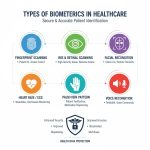Global Antimicrobial Plastics Market
As stated in our extensive report, the Global Antimicrobial Plastics Market accounted for USD 41.8 Billion in 2022 and is projected to reach a value of USD 71.1 Billion by 2030.
The Antimicrobial Plastics market has witnessed significant growth in recent years. Antimicrobial Plastics are materials that can inhibit the growth of microorganisms. This makes them ideal for use in various applications where cleanliness and hygiene are crucial, such as healthcare, packaging, consumer goods, and building and construction. Healthcare-associated infections (HAIs) are one of the major factors propelling the growth of the Antimicrobial Plastics market. HAIs are infections that patients contract while undergoing medical care in a hospital. These infections are a primary concern, as they can lead to significant morbidity, mortality, and increased healthcare costs. In order to lower the risk of HAIs, antimicrobial polymers are essential for stopping the development and transmission of bacteria and other microbes in healthcare environments.
Furthermore, global plastic waste poses a significant and pressing concern. Approximately 8 million plastic items are estimated to be in our oceans every day. A notable portion of this pollution, around 14%, is attributed to drink containers alone. The incorporation of antimicrobial additives in reusable plastic cups could offer a substantial contribution to mitigating this issue. Managing waste pollution is a multifaceted challenge that requires various strategies. Adopting bioplastics represents one potential avenue toward addressing the more significant problem. Another cutting-edge approach that can help with this important problem is antibacterial polymers.
Click To Get a Free Sample On the Research Study

Key Factors Influencing Global Antimicrobial Plastics Market Growth
The growth of the global Antimicrobial Plastics market can be attributable to the following:
- The increasing concern about spreading various bacterial and viral infections has led to a greater demand for antimicrobial products, including plastics. These plastics can inhibit the growth of microorganisms, making them ideal for use in various applications, such as medical devices, packaging, and consumer goods.
- The market for Antimicrobial Plastics is rising quickly, especially in emerging economies where the healthcare sector is expanding quickly. These plastics are extensively used in medical equipment, hospital furniture, and other healthcare products to reduce the risk of healthcare-associated infections. The market for Antimicrobial Plastics is anticipated to increase as a result of rising healthcare infrastructure investments and a growing emphasis on patient safety.
- The rising awareness about foodborne illnesses and contamination has led to a growing demand for antimicrobial packaging materials. Antimicrobial Plastics effectively prevent the growth of bacteria and other microorganisms on the surface of food packaging, thereby extending the shelf life of food products. The market for antimicrobial polymers in the food and beverage industry is anticipated to develop rapidly as a result of the growing demand for packaged food and the increased attention on food safety laws.
- The development of advanced antimicrobial technologies and the continuous improvements in manufacturing processes have expanded the application possibilities for Antimicrobial Plastics. Manufacturers focus on developing durable and long-lasting Antimicrobial Plastics that can withstand harsh environments and effectively protect against various pathogens. The market for Antimicrobial Plastics is projected to expand as a result of these technological developments.
- Besides healthcare and food packaging, Antimicrobial Plastics are also increasingly used in various other industries, such as automotive, consumer goods, and construction. For instance, Antimicrobial Plastics are used in automotive interiors to prevent the growth of bacteria and odours. In the construction industry, they are used in products like pipes, flooring, and surfaces that come in contact with water. The expanding application of Antimicrobial Plastics in these industries will contribute to market growth.
Asia Pacific Region to Express the Largest Market Growth
Asia Pacific has asserted its dominance in the global market, primarily driven by increased production levels in key consumer goods, food and beverages, and automotive sectors. This surge in production is anticipated to lead to a significant rise in demand for Antimicrobial Plastics. In addition, notable investments have been funnelled into the healthcare sector within the Asia-Pacific countries of India, Indonesia, South Korea, and Vietnam. In response to a rising medical expenses and rapidly expanding elderly population in the region, a deliberate effort is being made to strengthen the healthcare infrastructure.
In addition to healthcare, the Asia Pacific region has attracted substantial investments in the electronics industry, with significant growth in electronic manufacturing in countries such as China, India, South Korea, and Japan. This growth is poised to drive the demand for Antimicrobial Plastics, particularly in electronic applications. Moreover, the Asia-Pacific region is expected to experience the swiftest expansion within the global packaging industry. Leading countries in this industry, like China and India, are leading this rise, which is being fuelled by things like the growth of e-commerce, an increase in online food deliveries, continued innovation, and advancements in packaging.
Conclusion
Overall, the expanding use of Antimicrobial Plastics in various industries, advances in the production of Antimicrobial Plastics, rising awareness of hygiene and infection control, expanding healthcare facilities, rising demand for food safety and packaging, and rising healthcare facility numbers are key variables controlling the development of the Antimicrobial Plastics market.
Some of the key players in the Global Antimicrobial Plastics Market includes BASF SE (Germany), Dow Inc. (U.S.), Clariant AG (Switzerland), Parx Materials N.V. (Netherlands), Ray Products Company Inc. (U.S.), COVESTRO AG (Germany), King Plastic Corporation (U.S.), Palram Industries Ltd. (India), SANITIZED AG (Switzerland) and others.
![[Market Research Reports] – Research Google News Blog | VMR.Biz](https://www.vmr.biz/wp-content/uploads/2022/12/logo-removebg-preview.png)











